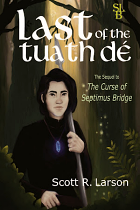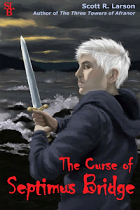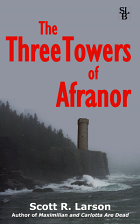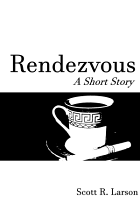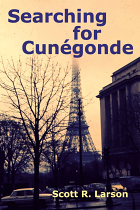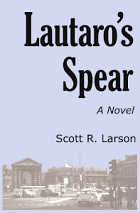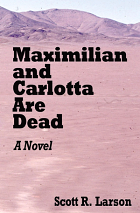My Journal of the 25th Kerry International Film Festival in 2024…
Killarney, Ireland, October 17 through 20Thursday 17 October
Dance to Remember (Opening Short)
Housewife of the Year (Opening Film)
Friday 18 October
Irish Shorts 2
Opening Short
Dance to Remember
This emotional and transcendent 20-minute movie is a visual and aural elegy for the filmmaker’s father. As a broadcaster/DJ/podcaster, Dónal Dineen’s life revolves around music—and always has. That is also his key connection, as he has come to realize, to his father who died suddenly when Dineen was only 16. This film is the result of his working through the emotions and meaning of his and his father’s lives. As with many adolescents, his relationship with his dad was contentious. He did not identify with the old man’s simple life that revolved around a plot of land. His head was taken up with a new generation of music, but what he did not fully appreciate at the time was that his dad had a love of music too. He would regularly cycle long distances to take part in Irish set dancing, and in fact, that was what he was doing when he died. A healthy 48-year-old teetotaler, he collapsed while on the dancefloor. The tragedy of the loss was made even more poignant, as the father did something uncharacteristic earlier in the evening. He popped his head into Dónal’s room, asked how his studies were going, left a couple or chocolate bars on the bed, and then left. Through imagery, suggestive recreations and, mostly, music the film evokes Dineen’s memories and emotional landscape as he recounts his delayed discovery of a love, shared posthumously with his father, of the traditional music of the Sliabh Luachra region of the province of Munster. Much credit goes to the cinematographer/editor Peter Martin and to Damien Lynch and Aza Hand for the sound design and mixing. Dance to Remember was the 2023 recipient of the Kerry Short Film Bursary, supported by Kerry County Council Arts Serviceand the Arts Council of Ireland.
Irish Shorts 2
Where the Old Man Lives
Partly a character study, partly an examination of a contemporary social issue, and partly a tense thriller, this movie packs a lot into its 20-minute running time. Michael Harding (Black Ice, Run & Jump) plays Michael, an pension-age farmer living on his own in a remote rural area. He’s the old-fashioned sort who has never joined the online banking age. He deals in cash, and he hides it in his bed’s mattress. Seanie (Michael Patric), a kind younger neighbor gives him lifts to town and looks in on him from time to time, and an odd time his sister (Ruth McCabe) pays a visit and cooks him a right meal. Isolation and vulnerability, however, are catching up with Michael. He notices a young fella futively taking an interest in the money he’s made selling cattle at the local mart. For no apparent reason, a strange car drives down his road into his yard and out again. The unfortunate fate of two elderly brothers in a similar situation weighs on his mind. This situation is not uncommon in the West of Ireland, and in fact Eamonn Keane and Ruaidhrí Hallinan’s screenplay, while fictional, is inspired by actual events. Suspense is built nicely by Sonya O’Donoghue’s deft direction. The mood and tone are set effectively by Niall O’Connor’s cinematography, Saoirse O’Shea’s production design, Sarah Lynch’s music. The film’s rural setting and theme of living under siege are somewhat reminiscent of Straw Dogs, a novel by Gordon M. Williams that was adapted for movies in 1971 and 2011, but the key difference is that our protagonist is not an outsider in unfriendly territory but rather a man who has lived his life entirely in one place while seeing society and his community change around him. As a disclaimer, I should note that Ruaidhrí Hallinan is a neighbor of mine, and I have been looking forward to seeing this film for some time. I was certainly not disappointed. Hallinan is also the screenwriter of the short film Remote Strutting, which played to enthusiastic audience reaction in July at the Galway Film Fleadh. This screening was the Irish premiere for Where the Old Man Lives. It had its world premiere at the Calgary International Film Festival in Alberta, Canada. It has also played at the Worcester Film Festival in England, and at the Catalina Film Festival in California where it won the prize for Best International Short.
Vanilla
Simon is having a solitary pint at the local pub when Joe, the town’s GP, wanders in. Why does Simon seem none too eager to spend time with Joe? And what explains Joe’s dark mood? In the space of 12 minutes, it all becomes clear. The two men have history, and today—the anniversary of a tragic event—it is all going to come out. Gradually, the cleverly written screenplay by director Tony O’Donnell reveals all, bit by bit, drop by drop. The barroom conversation about the vanilla spice and a rare allergy some people have to the plant’s leaves sounds like so much idle chatter until we realize that all these bits of information are actually pieces of puzzle. By the end, the solution is subtly revealed with the effectiveness of a well delivered punchline. Joe and Simon are played by two faces familiar on Irish screens, Gary Lydon and Pat Shortt, the latter a man best known for broad comedy but here who plays it mostly straight although with the odd hint of devilment. Peter Gowen plays Walter, the man serving the drinks. The movie was filmed in Belmullet, County Mayo, though since it all takes place on a single dark interior set, there’s not much opportunity to enjoy the local scenery. Instead, we are content with a well played conversational game of cat and mouse with a vanilla twist.
The Crucible
Definitely not to be confused with the celebrated Arthur Miller play about the Salem witch trials, this film—written and directed by and starring Caroline Harvey—deals with a crucible of a different sort. While the word’s original meaning had to do with a vessel for melting and calcining substances at an extreme degree of heat, it has since come to refer to a severe test or an environment that spurs development. In the case of Hannah, the character played by Harvey, the crucible is the sea off the coast of Ireland. The film is largely dialogue-free but through visuals and Hannah’s interactions with others, we understand that she is overcoming a serious fear on the day of her surfing course’s final examination. Harvey conveys Hannah’s inner turmoil in the lead-up to the test on a particularly stormy day and then again when near-disaster occurs. At the end of it, in an almost off-hand way, her instructor says, “You survived,” but all we have seen before informs us that this is momentous. Harvey previously wrote and produced the short Wednesday’s Child, and she will be familiar to Irish viewers for the half-decade she appeared in the TV series Fair City.
They Can’t Know About Me
Frank seems to have the perfect life. He lives a comfortable life in Dublin with a lovely wife and 10-year-old daughter. Very quickly, though, in the course of this 15-minute movie, we observe that Frank has, if not exactly a whole separate life, then at least a very secretive hobby. He regularly accompanies Linda and Jen on their shopping trips to Henry Street where he invariably offers some pretext for going off on his own for a while, such as watching a match in a pub. Linda clearly has suspicions about these absences and about the amount of time Frank spends texting on his phone—especially when he can’t precisely say who won the match he supposedly watched. Things take a stressful turn when he is caught in a compromising situation and his extracurricular activities risk becoming public knowledge. Will the enviable life he has built for himself be lost or changed forever? Frank is played in nuanced way by Richard McWilliams. Callie Weir is very natural as young Jen. And as Linda, Fiona O’Carroll shows an impressive dramatic depth that rarely, if ever, gets seen in her best known role as Maria in the manic sitcom Mrs. Brown’s Boys. The film’s writer and director is Michael Carolan.
Unfortunate Events That Made Us Fortunate
The title suggests that this is a story about silver linings. We follow young Ray as he makes his way along Dublin’s seaside, taking time to do some sketching here and there. He calls into Kate and her precocious nine-year-old daughter Nash. We aren’t told precisely what Ray’s relationship is to this pair, but through guess work (and helpful film festival program notes) we understand that they are longtime family friends and, in fact, Ray had a brotherly relationship with Nash’s dad, who is now in the hospital with a serious condition. Emma Lowe, who plays Kate, has the challenge of portraying a woman under serious stress who is doing her best not to show it. The corner of a paper statement, displaying a “past due” stamp, peeks out from under a ledger on her desk. Later when the trio are out food shopping, Ray and Nash demonstrate an ease with each other that speaks of warm closeness, and Ray helps Kate out of a jam by taking Nash home to his own parents for dinner. That’s about it storywise, but the clear theme of the tale is that we can find ourselves growing closer to others, not only in spite of, but also because of trying circumstances, and that siblings do not have to be related by blood. The movie is written and directed by German-born Jan Paul Lodzinski, who began working on films as a cinematographer.
Conveyance
You have to admire a cleverly chosen title that works on several levels. For example, a conveyance is a legal instrument for transferring property. The word can also refer to a manner of communicating or passing a message. When the opening scene nearly ended with poor Brian nearly being knocked down by a bus, I thought it might refer to transportation. Brian and Suzanne are a young Dublin couple attempting to find their starter dream home, but given the city’s current housing crisis, well, this 15-minute flick is nothing if not topical. Their luck seems too good to be true when they find the perfect south Dublin apartment with a sea view and at a price that is too good to be true. What’s the catch? The answer comes in a series of phenomena that will be familiar to any viewer of movies about poltergeists and exorcists. Writer/director Gemma Creagh has fun playing with the familiar trappings of such cinema, as our protagonists consult friends, a white witch and even a priest in order to make their new home habitable. Will they be able to reach some kind of accommodation with whatever spirit is rooming with them? As Suzanne and Brian, Chrissie Cronin and Patrick Martins hit the right balance of terror, exasperation and comic reactions. This is more than a parody of haunted house movies. It’s an entire commentary on the horror show that is government housing policy.
I Found a Place
This is the second film in a row I saw at the Kerry International Film Festival that made a wry and imaginative commentary on Dublin’s housing crisis. In the space of just eight minutes, it poignantly takes us from laugh-out-loud humor to tear-jerking sadness. As it opens, Seán is using his mobile phone to show off his new Dublin apartment to his mam and dad back on the farm. What he’s really showing them, well, that’s too good a reveal to spoil here. Somewhat reminiscent of another generation of men that went off to England and other places in search of work only to endure endless hardship, Seán represents a new contemporary cohort confronting a similar adversity in their own now-prosperous country. The writer/director Zoë Gibney, a make-up veteran of many TV and film productions, does a lovely job capturing the heartbreak of the situation. Seán is played by Brian of the Gleeson acting dynasty. His parents are also familiar faces on Irish screens, Bríd Ní Neachtain and Enda Oates. As the film closes, the ironic lyrics of the song “How Lucky” sung by Kurt Vile and the late John Prine capture the tone perfectly.
Related Commentary
25 October 2024: Only three more centuries until the chief is born, but in the meantime his hometown is a great place for a film festival [Quick call to the Kingdom]
Links to official film festival sites















